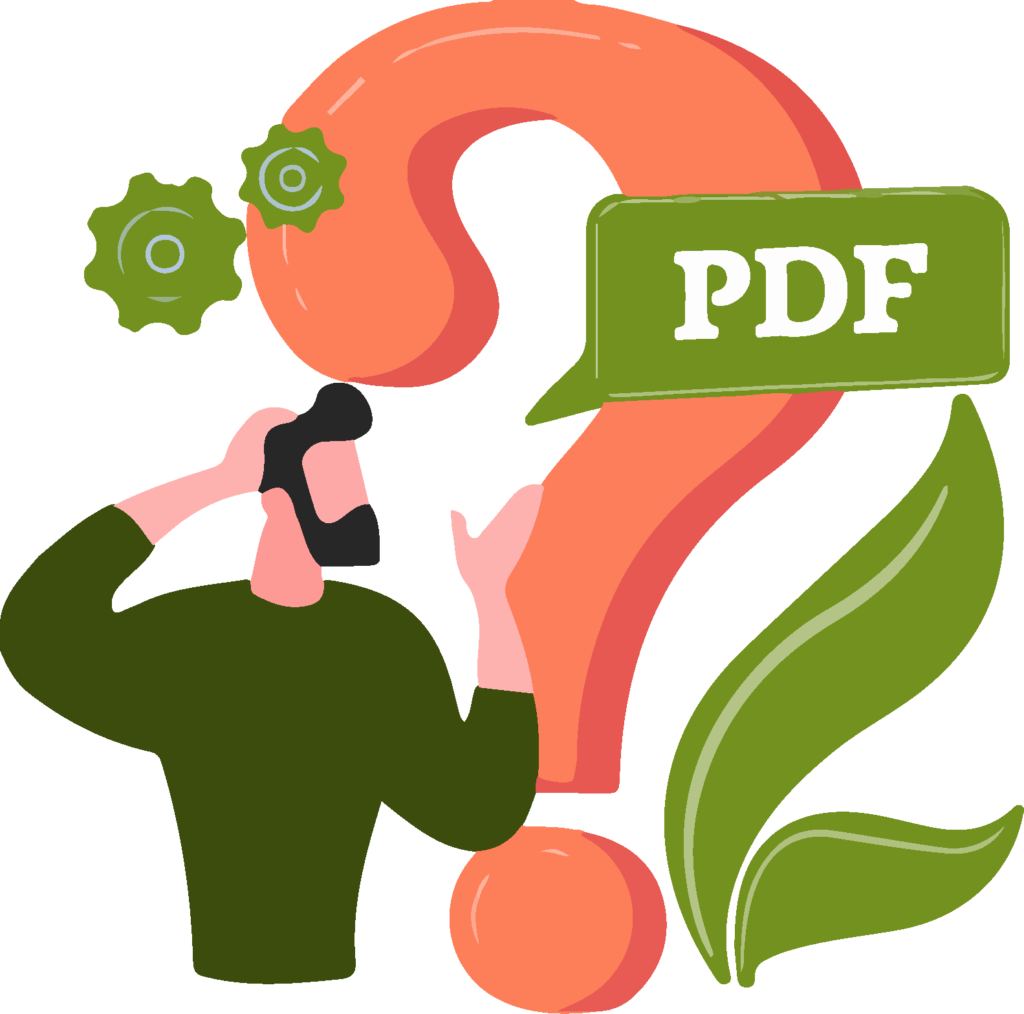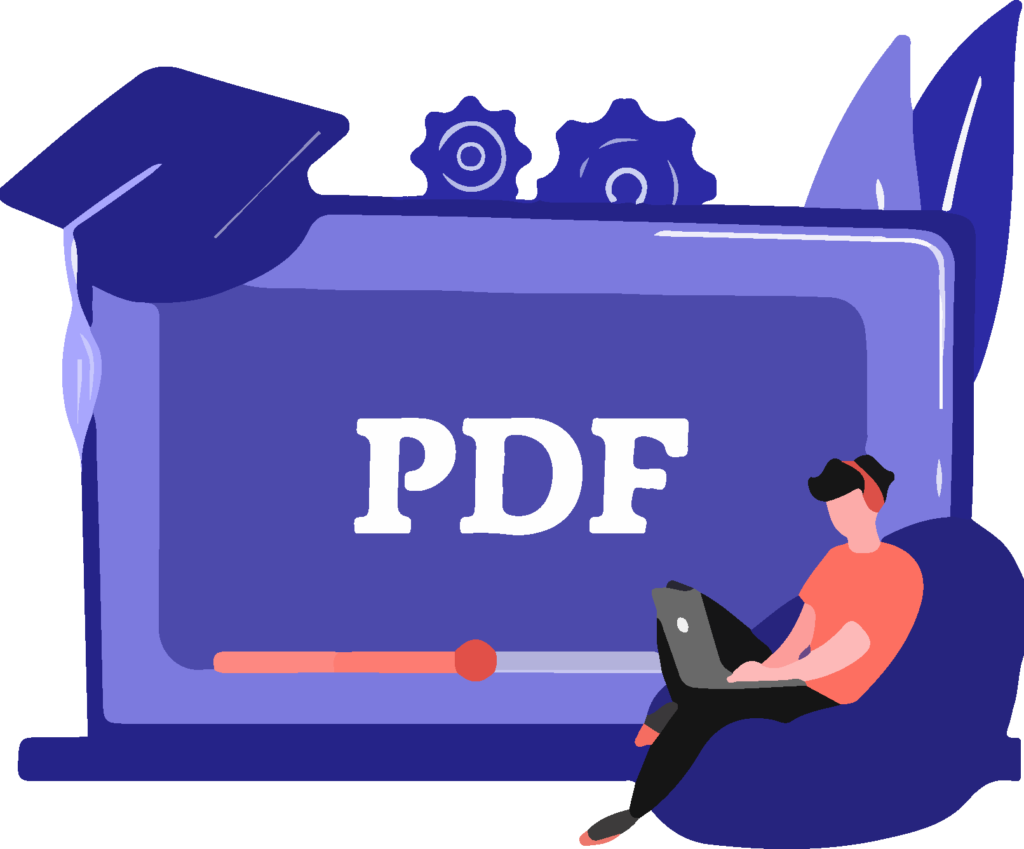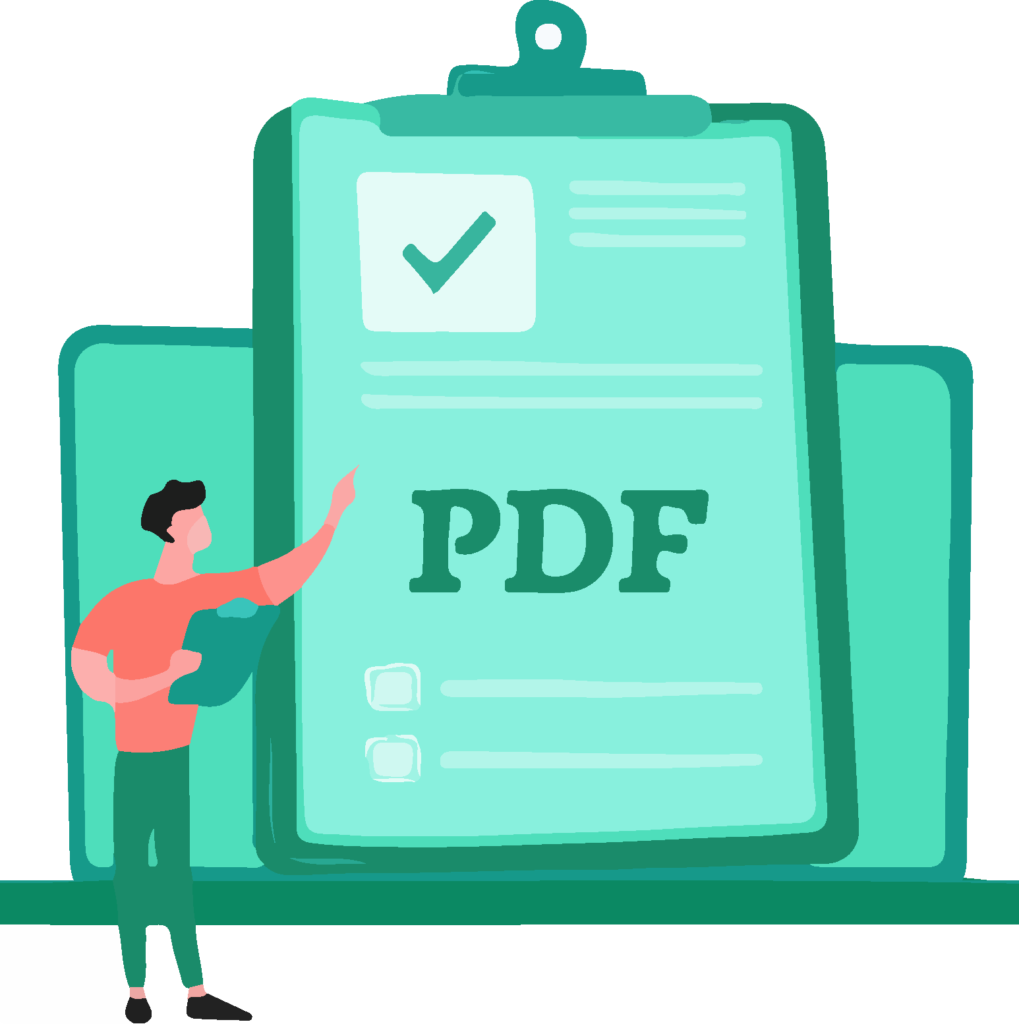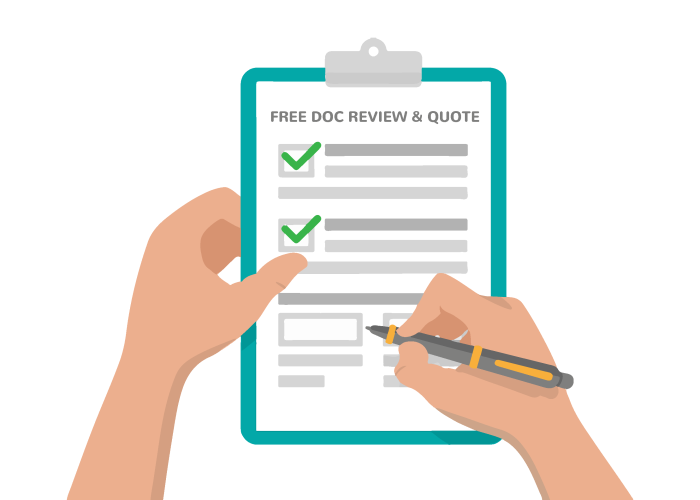Since the dawn of the information age, starting in the 1970s, companies, and organizations are using digital documents to communicate information all day, every day. This can be Word documents, Excel spreadsheets, PowerPoint presentations, and PDFs. So, when we are up to our ears in all of these documents it can be a surprise to learn that the law requires that they meet Americans with Disabilities Act (ADA) accessibility standards.
- The requirements for documents (PDF, PowerPoint, Word, and Excel) to meet accessibility standards.
- The importance of document accessibility compliance for your business or organization.
- How to reach the goal of document accessibility efficiently, quickly, and cost-effectively.
Why do documents need to be accessible?

You can think of document accessibility in the same way. The goal is to allow everyone the ability to read your documents. So, there is a need to put some extra thought and care into ensuring that happens.
What is accessibility and what does it have to do with my business or organization documents?
Unless you have been hiding under a rock, you would know that PDFs are everywhere. Used in contracts sent to new employees, the electric bill attached to an email, or a menu downloaded from a restaurant’s website. PDFs are a part of our lives. Have you ever thought about them in the framework of accessibility?
You may have heard about website accessibility. It is the need to make the internet accessible to reach the disabled communities. But it is not only websites that need to meet accessibility.
PowerPoint, Word, Excel... Oh My!
So what about a company or organization PowerPoint presentation or a Word document? You will find accessibility all around these days and that is a beautiful thing. Accessibility means people with unique needs, such as the blind or visually impaired, can access information or interact with websites. This makes it so that a larger, more diverse audience can be reached.
When it comes to accessibility for your documents, it is to ensure that everyone who accesses your document can do so. They can in a manner that allows them to navigate the document with ease. Everyone is able to understand and interact with your business or organization in a meaningful and useful way.
When you say "accessibility" what do you mean?
For example, a website may look like a screen reader or have the capability to disengage flashing media that could cause a seizure. It is easy to understand website accessibility but most are not sure or even aware of document accessibility.
Let us dive into all things document accessibility from PDFs, PowerPoints, Word, and Excel. In this Ultimate Guide, you will learn about the accessibility requirements for each of these file formats.
The World of PDFs
- What do you need to make a PDF accessible?
- Who created the rules?
- Why does it matter?

What exactly is a PDF?
PDFs are a versatile file format created by Adobe that makes it easy and reliable to present and exchange documents. This is regardless of the software, hardware, or operating system used by anyone who views the document. Also, the output device that the document is displayed or printed.
Let us look at how and why PDFs need to meet accessibility standards.
How can a PDF be made accessible?
PDFs are accessible when disabled communities can access the information within the document. If a person is blind needs to access the information in a document, they will need a screen reader. Others in the community that need access to and navigate your documents include those who have hearing loss, low vision, cognitive impairments, and more.
So, how does this work in real life? The use of assistive technologies allows people with disabilities to access different information. A few of these include:
The History of Accessibility
In today’s business world, they need an online component to operate the business. It can be a restaurant with a downloadable PDF menu. It can also be a government organization with a downloadable PowerPoint presentation. Every day people are online ordering groceries, buying cars, booking babysitters, and searching for answers to their questions.
At the beginning with this new, large wave of digitization came a need for accessibility standards.
World Wide Web Consortium (W3C)
W3C or more commonly known as the World Wide Web Consortium is an international standards organization. They are responsible for creating technical standards to make the web more accessible to people with disabilities. The W3C developed the standards like HTML5 and CSS 3. Internet browsers, content creators, programmers, and designers adhere to these standards to create the World Wide Web (WWW).
PDF Tags
A tagged PDF, according to the W3C, is an accessible document. It is like a map which details exactly where you need to go. A tagged PDF defines a set of standard structure types and attributes. This allows page content, such as text and images, to be extracted and reused for different purposes. The different elements of the document are marked within it and organized into specified tags. Then through software, the content is present for those who need it.
Tagged PDFs make it possible for specific tools to perform operations like:
- Allow content and information to be accessible to those who need assistive technology to navigate PDFs.
- Markup languages.
- Extraction of text and graphics.
- Reflow text and images so the page can fit on different sizes other than the original layout.
- Correct color contrast issues.
- Conversion to other file types such as RTF or HTML.
What standards should be met?
Web Content Accessibility Guideline (WCAG) is the gold international standard for accessibility. Their documents explain how to make web content more accessible to people with disabilities. WCG’s goal is to provide a single shared standard for web content accessibility that meets the needs of individuals, organizations, and governments internationally.
The internet is growing and ever-changing. If you are old enough, you can remember the days of downloading music on Napster to your computer. Now compare that with today’s telehealth and live video streaming. With so much change so fast, there was a need for WCAG to also evolve and update its guidelines.
Key Takeaways
- Document accessibility allows all people, including those with disabilities, to access your content and information.
- “Tagged” is the keyword to remember for PDF accessibility.
- The accessibility standards are set by W3C and WCAG.
The Other Document Types
We concluded that ensuring your documents are accessible is a good thing to do. Everyone, including those with disabilities, deserves access to digital information. Your documents are no exception to that rule.
It is also good for business because the more people who interact with your company or organization the better.
The Legal Side of Document Accessibility
There is a legal component to accessibility. The accessibility of electronic documents is a right that is protected by both Federal and State law.

What is Section 508?
The Rehabilitation Act was amended by the U.S. Congress in 1998. This required all Federal agencies to make their information accessible to disabled communities. This is commonly known as Section 508. The goal is to remove barriers in information technology. To ensure that individuals with disabilities have equal opportunities and are included in technology development.
The other document types we will discuss that are required to meet accessibility standards are:
- PowerPoint
- Word
- Excel
PowerPoint
PowerPoints are presentations that have visuals that include text, images, and videos to convey a message to the audience. What if someone in the audience has a visual, hearing, motor, or other disability?
Someone with a disability may experience your PowerPoint presentation in the following ways:
- A visually-impaired individual, blind or with low vision, will miss critical aspects of the presentation. The images have an important aspect to the presentation.
- A hearing-impaired individual, deaf or is hard of hearing, will have difficulty understanding the speaker. Often times the PowerPoint slides are a supplement to the overall presentation. The speaker is explaining in a larger context. Only seeing the slides is not enough to understand.
- A motor-impaired individual, partial or total loss of function of a body part, trying to access the PowerPoint presentation is not able to skip through the slides or click to hear the sound of any embedded videos.
Allowing everyone equal access to information is important. It is especially true when we understand the difficulty of navigating documents for disabled people.
What does an accessible PowerPoint look like?
Per W3C, an accessible Microsoft PowerPoint presentation includes:
- Captions in all videos, music and other types of audio must have visual captions.
- Adequate color contrast on all slides.
- Easy to read font.
- All meaningful content is described verbally.
- A need for an American Sign Language (ASL) translator.
- Time for people to process the information presented.
Word
- Headings are your best friend. Use the options available to you within Word, for example, Heading 1, Heading 2, Heading 3, and so on.
- When making a list, use bullet points or numbers. Without this screen readers are not able to recognize that you are trying to list something.
- Ensure that all images have alternative text (Alt text) or are set as a decorative image.
- Don’t rely on color to communicate meaningful information.
- Identify the language used in the document.
Microsoft has a built-in accessibility checker used to better understand accessibility and Word. They have included features to help label, identify, and sort through data, content, and information. To ensure that a reader who is using a screen reader or is colorblind can equally access the document.
Excel
We all have a love/hate relationship with Microsoft Excel. There are so many cells! So much data! Don’t get me started on the formulas! Have you ever paused to think about what it is like for the disabled communities accessing the same Excel documents?
So, how can an Excel spreadsheet meet accessibility standards? Keep the following things in mind:
- Titles are essential in explaining sets of data in the spreadsheet.
- Include a message indicating the end of tables.
- Do not use blank cells to format.
- Ensure that each sheet tab has a unique and relevant name.
- Merged cells can make those who use a screen reader unsure how the information relates to other rows or columns.
- All images, charts, and graphs have Alt text.
- All tables have summaries to understand what they represent.
Microsoft further explains this in detail on making your Excel documents accessible to people with disabilities.
Who can make my documents accessible?
You are more than likely here because of a problem you are wanting to solve. While accessibility seems like a mountain of information that is difficult to climb. It is doable and we can help.
RemDoc has a commitment to provide equal access to digital documents. We help companies and organizations of all shapes and sizes meet accessibility standards. RemDoc resolves issues of document accessibility. We do this by:
- All accessibility-related issues are identified by an experienced Digital Accessibility Specialist.
- Each identified issue is resolved to make the document ADA and WCAG compliant for all users including those in the disabled communities.
PDF, PowerPoint, Word, and Excel documents pose a unique challenge for businesses and organizations to meet accessibility standards. This guide hopefully has helped provide a better understanding of document accessibility. It is necessary for many reasons.
- Document accessibility is the right thing to do. It allows disabled communities to access your information.
- Document accessibility allows you to reach more people and a larger audience.
- It is the law. Not meeting document accessibility standards puts you at risk of a lawsuit, costs a lot of money, time, and resources.
Now you are better armed with the information you need to meet document accessibility. Go forth and embrace those compliance standards!





